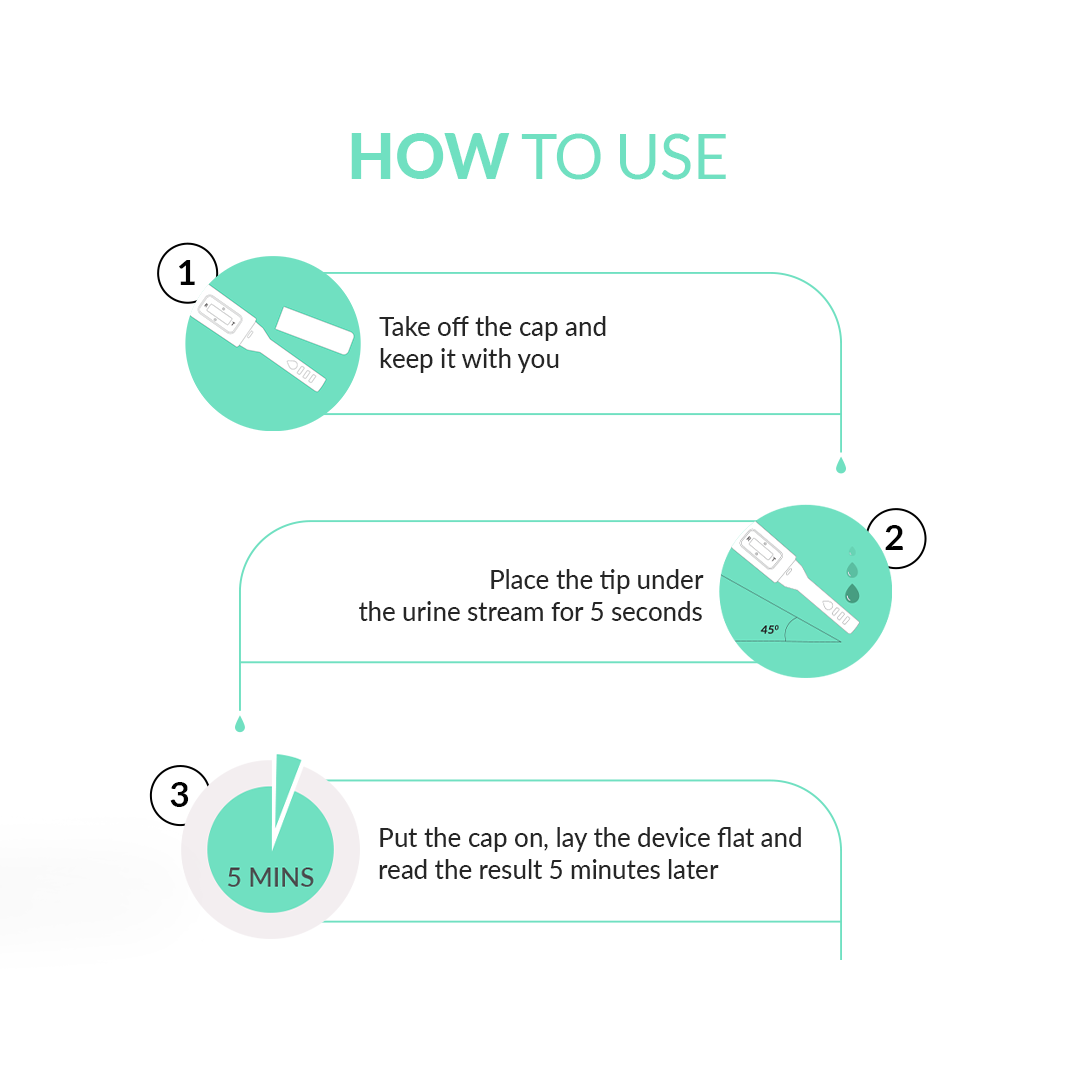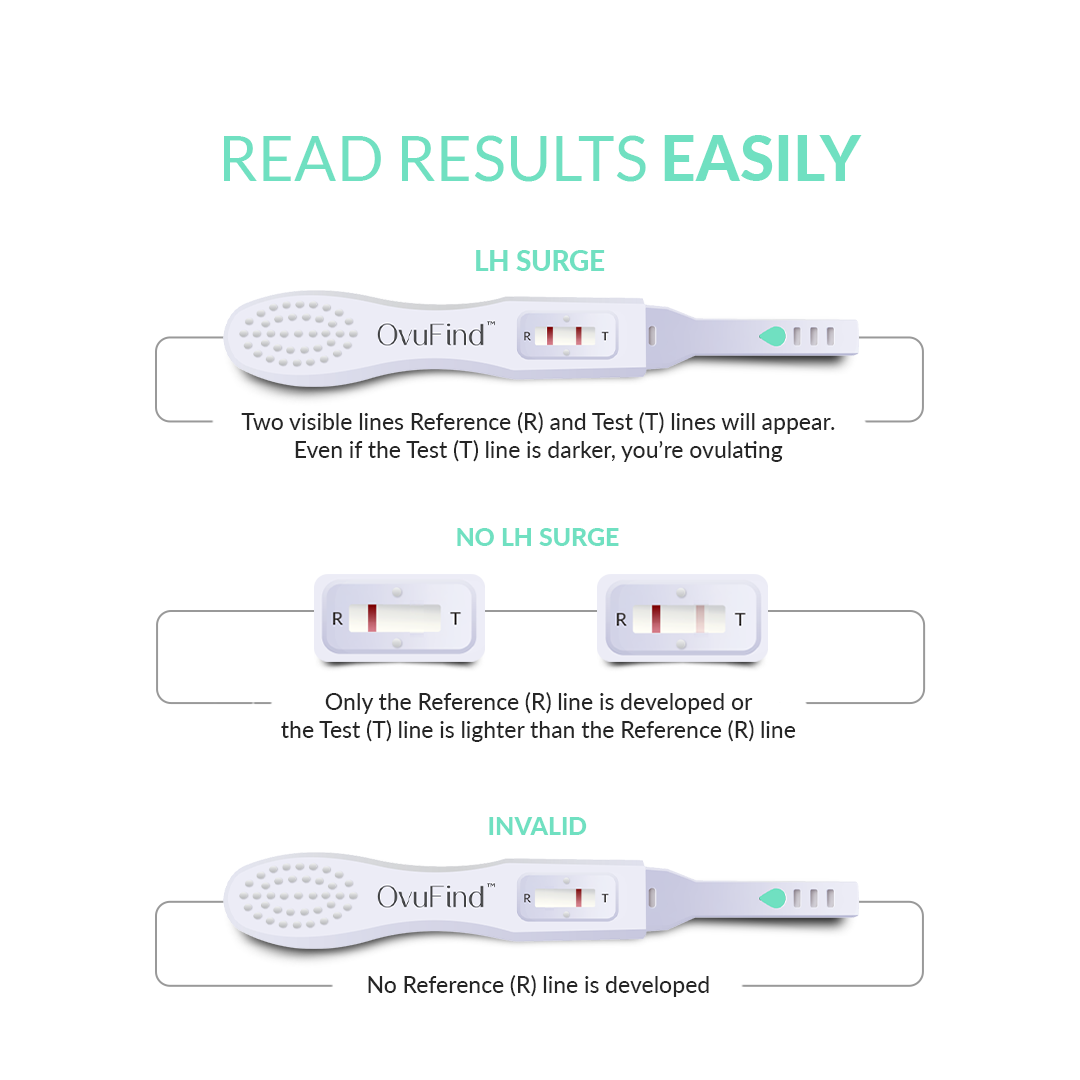HOW TO USE




Take the cap off before using and keep it. Place the tip under the urine stream for 5 sec.

If you prefer, you could also collect urine in a clean, dry container/cup and dip the absorbent tip area in the cup for 10 seconds.


Take the cap off before using and keep it. Place the tip under the urine stream for 5 sec.


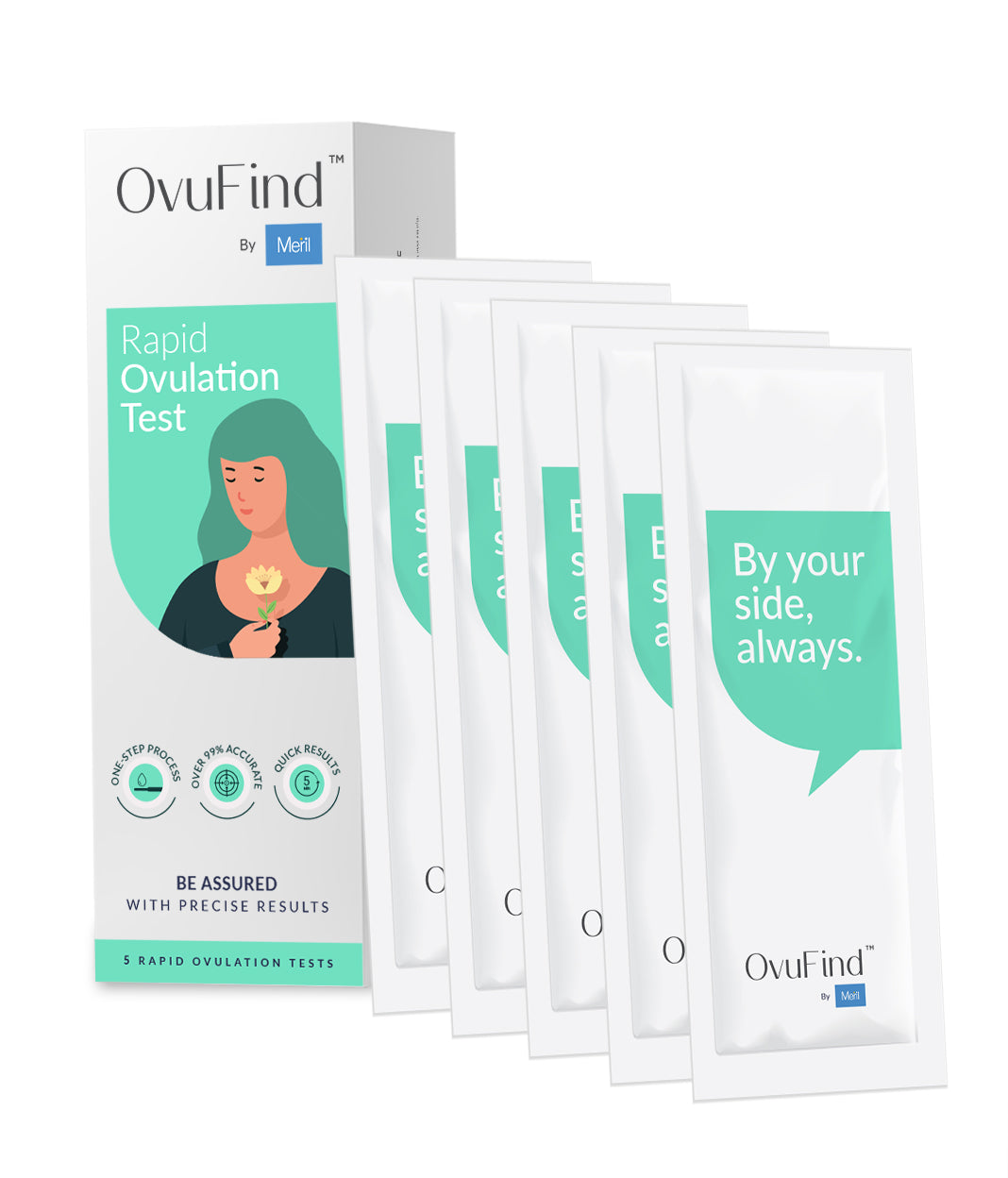
OvuFind
Discover your Peak Fertile days
Midstream Technology for Women | One Step Process | Over 99% accurate | Quick results
• EASY TO USE: Built specifically for modern women who are "planning to conceive," using the OvuFind Rapid Ovulation Testing Kit to determine the optimum days to become pregnant. Even if their cycle durations differ, these OvuFind Rapid ovulation tests boost women's chances of naturally becoming pregnant by helping them estimate their most fertile days.
• OvuFind Rapid Ovulation test kit is a midstream kit, which makes it different from standard test kits in that it may be used by placing it straight into the urine flow, making it convenient, simple to use, and hygienic.
• Its Rapid LH detection aids in testing the LH spike in urine, which indicates that ovulation is probably going to happen in the upcoming 24-36 hours.
• ACCURATE: OvuFind Rapid is 99% accurate and has undergone comprehensive testing for your convenience and hygiene.
• CONTENTS: Test Devices, Leaflet are included in the package.
Why choose OvuFind ?
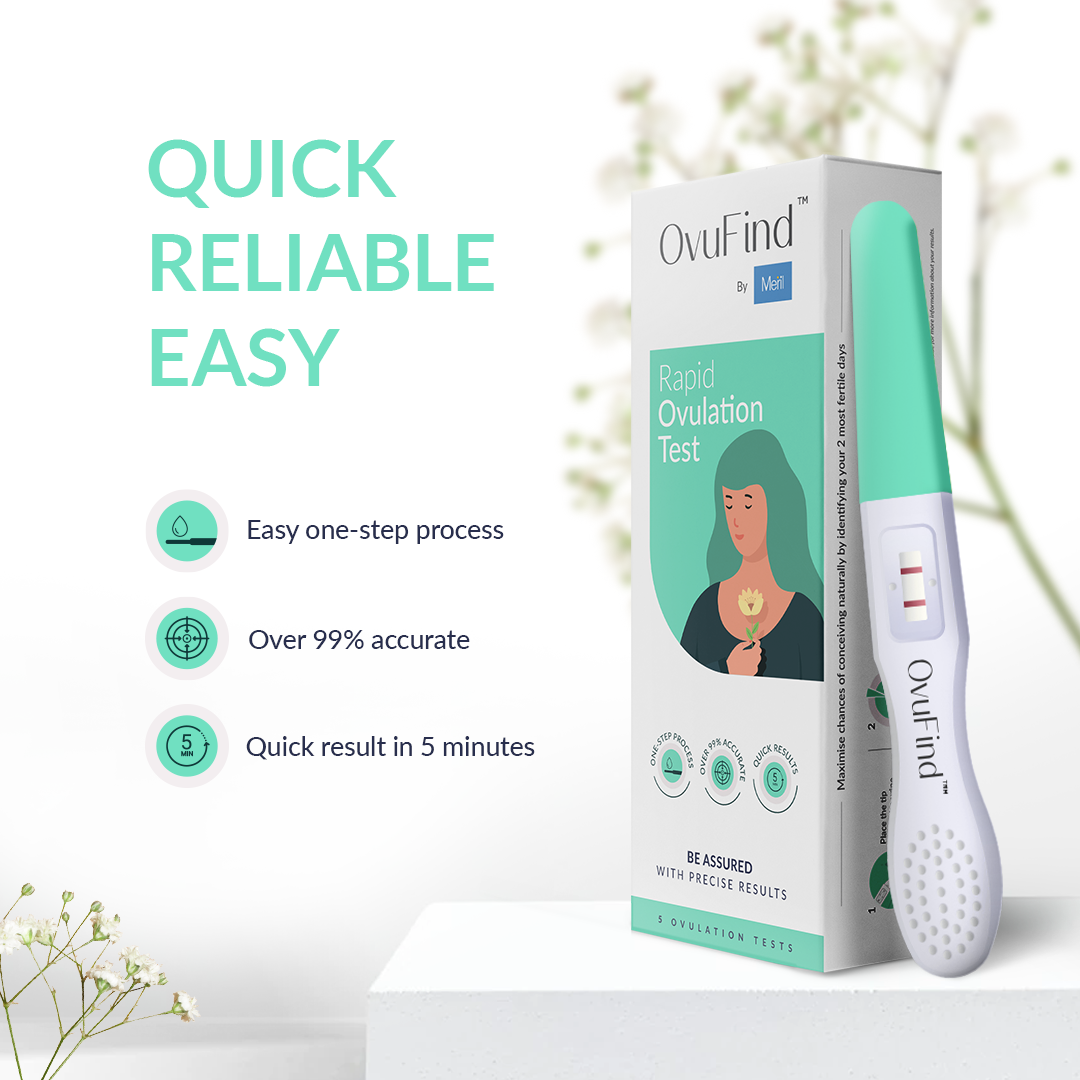
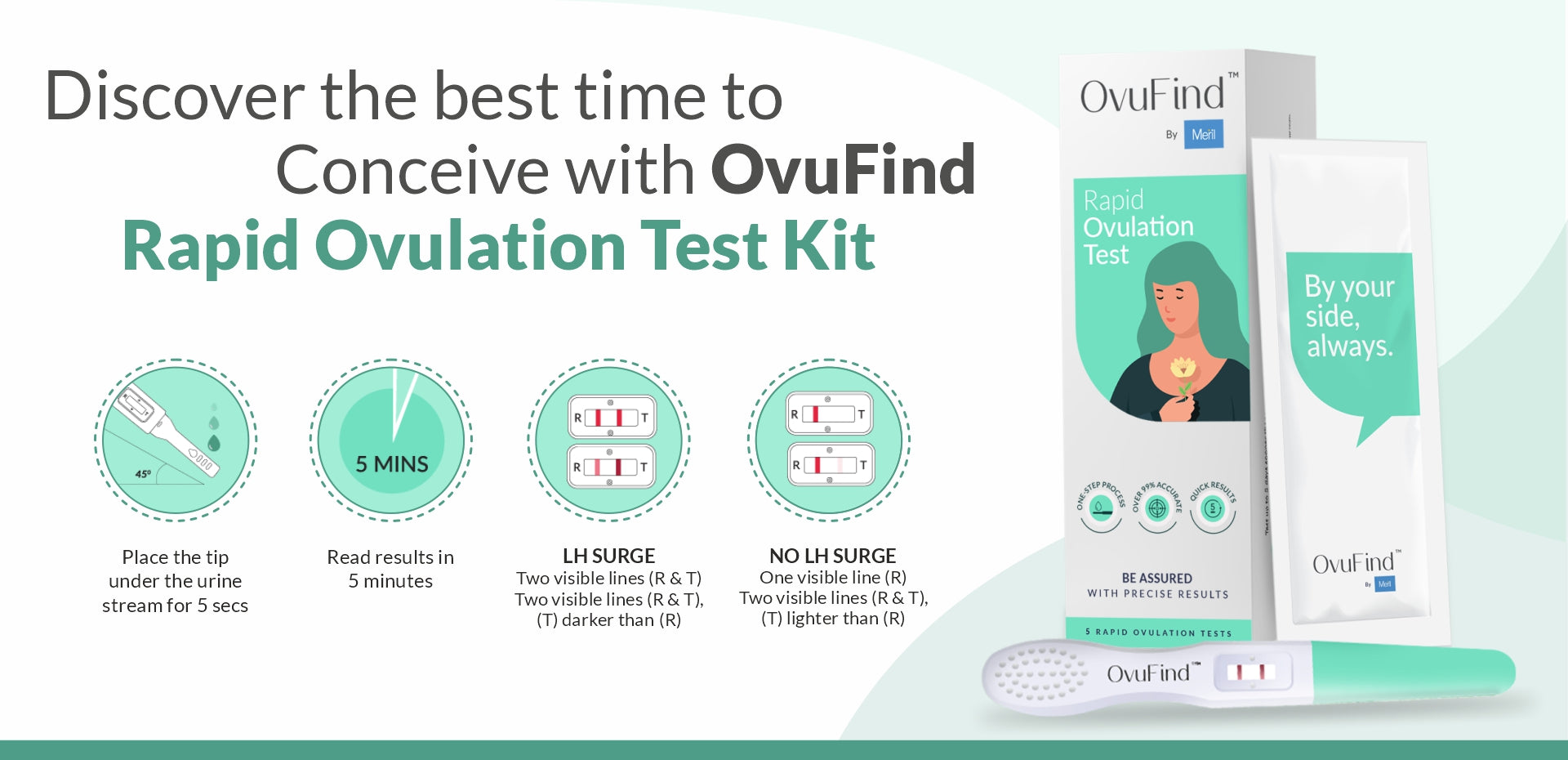
(1) What is Ovulation ?
Ovulation is part of the female menstrual cycle. The level of estrogen in body rises and eventually causes a rapid rise in luteinizing hormone (the 'LH surge') from the brain. This LH surge causes the dominant follicle to rupture and release the mature egg from the ovary, from where it enters the fallopian tube, where it can be fertilized by sperm. This process is known as ovulation. It generally occurs about two weeks before the start of the menstrual period.
When does Ovulation occur?
Menstrual cycle length varies from woman to woman. Many women believe that they ovulate on day 14, however this is only an average; most women ovulate on a different day of the menstrual cycle that is typically between 23 to 35 days. Also, ovulatory day may differ from cycle to cycle. Ovulation usually occurs 12-16 days before the next menstruation.
Some women claim to have cramps or pain when they ovulate, but many do not, and there are no other signs of ovulation. Therefore, understanding when one is ovulating can be complex and confusing. As a result, we recommend urinary ovulation tests to predict fertile windows as opposed to depending on cycle day alone. And to get pregnant, it’s important to have intercourse on your fertile days; if you want to find out when are your most fertile days, it’s important to get to know your own body and your own personal menstrual cycle.
How long does ovulation last?
Ovulation is the discharge of an egg from an ovary, it is almost instantaneous - the follicle bursts and the egg is pushed very rapidly into the Fallopian tube.
What is the difference between ovulation and fertile days?
While an egg only survives for up to 24 hours, sperm can remain active for up to five days. It may therefore be surprising to learn that a couple can conceive through sexual intercourse four to five days before the egg is released.
The total ‘fertility window’, taking into account the lifetime of both the sperm and the egg, is about six days. The 'fertile days' are all the days during your menstrual cycle when you have the ability to become pregnant if you have unprotected sex.
Identification of additional fertile days provides couples with more flexibility to plan intercourse around their lifestyle and also more opportunities to conceive, which may reduce the pressure that couples can experience when trying to get pregnant.
Signs and Symptoms of ovulation
Ovulation pain symptoms can include: discomfort in the lower abdomen, just inside the hip bone. The discomfort usually starts about two weeks before the menstruation period. Depending on which ovary is producing an egg, the discomfort is felt on either the right or left side.
Ovulation pain can vary from a slight twinge to significant soreness and can last anywhere from minutes to hours. It is usually felt on one side of the belly and varies from month to month based on which ovary is releasing the egg at the time. A tiny quantity of vaginal bleeding or discharge may appear in some instances. Some women feel nauseated, particularly if the discomfort is intense.
This can help to detect those most fertile time, observe these symptoms also along with the device to judge your ovulation days:
- Nausea
- Abdominal Pain & Bloating
- Increased Libido
- Increased Vaginal Discharge
- Change in Smell
- Cervical Changes
- Sensitive Breast
- Minor Bleeding
- Change in Basal Body
- Temperature
Why is ovulation important in the process of pregnancy?
Ovulation is an important component of pregnancy planning because only after ovulation can the egg meet the sperm and fertilise, resulting in conception. Attempting to conceive during this 'fertile window' improves your chances of success. With different cycles, determining the time of ovulation can be challenging, so a variety of techniques, such as urine test kits like the OvuFind Rapid Ovulation test, are available to assist us.
Symptoms of Ovulation pain
Ovulation pain signs can include: discomfort in the lower abdomen, just inside the hip bone. The discomfort usually starts about two weeks before the menstruation period. Depending on which ovary is producing an egg, the discomfort is felt on either the right or left side.
Ovulation pain can vary from a slight twinge to significant soreness and can last anywhere from minutes to hours. It is usually felt on one side of the belly and varies from month to month based on which ovary is releasing the egg at the time. A tiny quantity of vaginal bleeding or discharge may appear in some instances. Some women feel nauseated, particularly if the discomfort is intense.
When are the highest and lowest chances of getting pregnant?
The most fertile days of each period, when you have the greatest chance of getting pregnant from unprotected intercourse, are the day of ovulation and the day before - these are the two days of "peak fertility." However, because sperm can live in a woman's body for several days during her open period, there are a few days before this when you can also get pregnant - these are the days of 'high fertility'. Outside of this 'fertility window,' which lasts about 6 days, your chances of becoming pregnant are low.
(2) What is Menstrual cycle and Periods ?
The menstrual period duration (the time between the first day of bleeding and the next first day of bleeding) is typically between 23 and 35 days. A "normal" period can differ from month to month, but it typically occurs within this time range. For most women, the interval between ovulation (the discharge of an egg from the ovary) and their monthly period is between 12 and 16 days. (this is called the luteal phase)
Your menstruation begins on the first day of your monthly cycle. (day 1 of full flow). The time typically lasts between 3 and 7 days. If you have period symptoms, they will most likely be at their worst at the start of your monthly cycle. This is because your body's hormones are causing your uterus (womb) to aggressively shed the lining that formed during the previous menstrual cycle.
(3) PCOS and Ovulation
Women sometimes don't ovulate every month for a number of reasons. If your cycles are usually over 35 days, you may not be ovulating consistently or not at all. The majority of women who do not ovulate and are not pregnant, may have Polycystic Ovary Syndrome (PCOS). PCOS is a condition that you are born with and can cause a woman not to ovulate (release an egg) on a regular and consistent basis. These women may also have adult acne or an increase in hair growth above the lip or below the chin. On ultrasound, the ovaries may be seen to have many small cysts inside them that remain at a small size. Other conditions that can cause you not to ovulate include low thyroid function (hypothyroidism), high prolactin production (hyperprolactinemia), and during the time prior to the menopause
What exactly is the difference between menstruation and ovulation?
Since these stages are a part of your cycle, it can be confusing to differentiate between them.
We now know that ovulation occurs when an egg is released from your ovaries. But that egg is not always fertilized. It gets flushed out of your body during menstruation. Better known as periods, menstruation occurs after you ovulate.
FAQ
What is OvuFind Rapid ovulation test?
OvuFind Rapid Ovulation test is a one step mid stream ovulation kit which helps detect the peak fertile days in a month when there are maximum chances of getting pregnant. The OvuFind Rapid Ovulation Test specifically identifies the human Luteinizing Hormone (LH). It reveals if the concentration of that hormone in the urine is equal to or above 25 mlU/mL. The OvuFind Ovulation Kit is a device of its time and has a wide application for women who wish to conceive as quickly as possible and who want to understand how their body works.
How does the OvuFind Rapid Ovulation test work?
OvuFind Rapid Ovulation test are over 99% accurate in detecting the LH surge.
What does one box of OvuFind Rapid Ovulation test contain?
One box of OvuFind Rapid Ovulation test contains - 5 kits for ovulation tests, each with Midstream LH testing device, Dessicant (Silica Gel), instruction manual.
When should I take the test?
Anytime between 10 am and 8 pm. But most women find accurate results when they test in the afternoon. Ensure to avoid consuming a lot of fluids before testing. If required, continue testing everyday according to the given chart at the same time until you find the LH surge peak.
When will my result show up?
It’s best to check your result after 5 minutes from taking the test. If your check after 10 mins, it will most likely to be invalid and you’ll have to test again.
Once I detect my LH surge, when is the best time to have intercource?
Your two most fertile days begin with the LH surge. You are most likely to get pregnant if you have intercource within 24-36 hours after detection of the LH surge.
What is the difference between ‘ovulation’ and ‘fertile days’?
'Ovulation' is the process by which an egg is expelled from an ovary, which occurs 12-16 days before her next menstruation begins.
Fertile days are the days in a woman's menstruation cycle, preceding and including the day of ovulation, when she has the potential to become pregnant if she has unprotected intercourse.
Are Menstrual cycles always 28 days long and every woman ovulates on day 14?
The average menstrual cycle is 28 days long, but every woman is unique and many women’s cycles vary by 5 days or more. As menstrual cycles vary in length, so does the timing of ovulation, so it can be difficult to know when YOUR fertile days are.
I have irregular periods. Whats the best time to test?
This makes it harder to predict when to test but we’ve got you covered. If your cycle is irregular and varies by a few days every month, take the average of the last 3 months. Count 12 days from the first day of your period and then take the test.
How to read the results in OvuFind Rapid Ovulation Test?
The test is positive if a pink line is obtained in each R and T section. However, the test is negative if only one pink line is obtained in R section.
Where can you purchase the OvuFind Rapid Ovulation Test?
The OvuFind Rapid Ovulation Test is available online on ecommerce platforms like Amazon and Flipkart.
Are there any storage instructions for the contents of OvuFind Rapid Ovulation Test?
Yes. The test device and the ovulation test strip should be stored in cool & dry place away from direct sunlight, moisture and heat. Ensure that the device and strips are used before the expiry date.
What does 'LH surge' means?
Lutenizing Hormone, which is always present in the human urine. Ovulation is the release of an egg from a woman's ovaries and is essential for getting pregnant. Ovulation is spontaneously triggered about 36-40 hours after blood levels of a hormone called luteinizing hormone (LH) rise i.e. it increases before a woman's most fertile day of the month. This is called the LH surge.
What is the thin line in the test area?
If this happens, there is no LH surge. If the reference line (R) is darker that the test line (T), you’re not ovulating.
I can’t see a reference line in my test. What does it mean?
That’s an invalid result and you have nothing to worry about. It’s possible that the absorbent tip wasn’t saturated with enough urine, the test has expired or it is damaged. Grab another test and try again.
Will the result change if kept for a long time?
If the result shows LH surge, it may not change after the test is completed or for several hours. But if it shows no LH surge, do not read or interpret after 10 minutes.
What could affect my results?
Some prescribed drugs such as progesterone derivatives medicines, androgenic hormones medicine, ovulation inducing drugs and synthetic steroid growth hormone may affect the results. Medications containing hCG or LH may affect the test and should not be taken while using the test. If you are medically diagnosed with a fertility problem, you should consult a healthcare professional before using the product.
I’ve recently stopped using hormonal contraception (e.g. the contraceptive pill). Will this affect the results on my ovulation test?
No, it will have no effect on your findings. Your periods, on the other hand, may be irregular and require some time to stabilise. Before using an OvuFind Rapid Ovulation Test, you should wait two normal menstruation periods and record their duration.
Will oral contraceptive pills affect the result?
If you use oral contraceptive pills, your period cycle may become irregular and take some time to stabilize again. Wait until you have two normal periods before taking the OvuFind Rapid Ovulation Test.
How do I know if I am pregnant?
Take the Ezeefind One step mid stream early pregnancy test to detect hCG.



